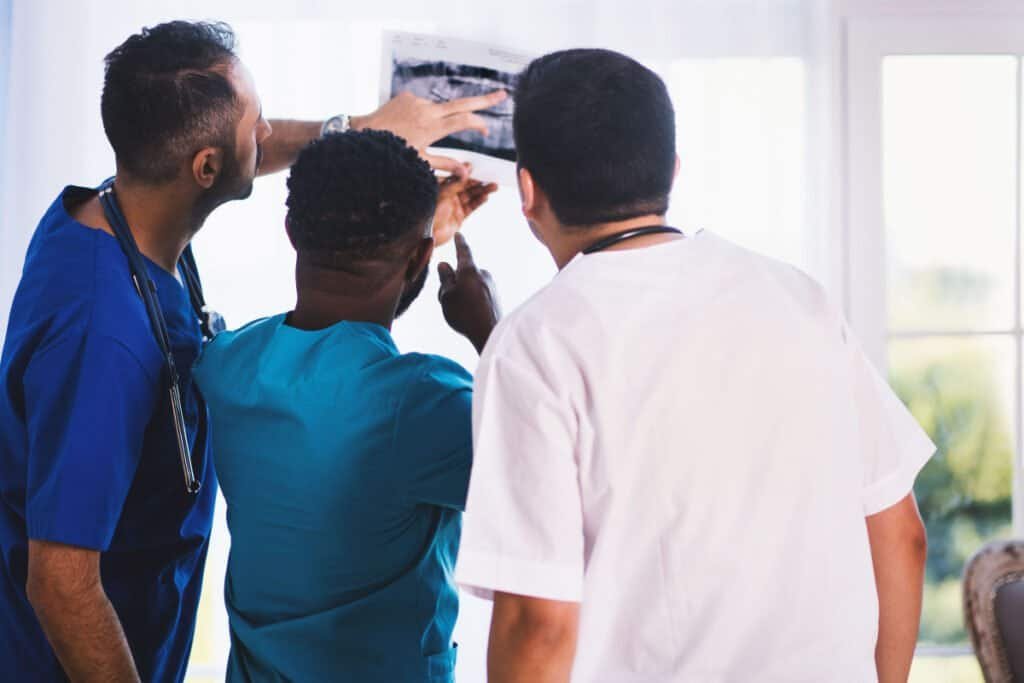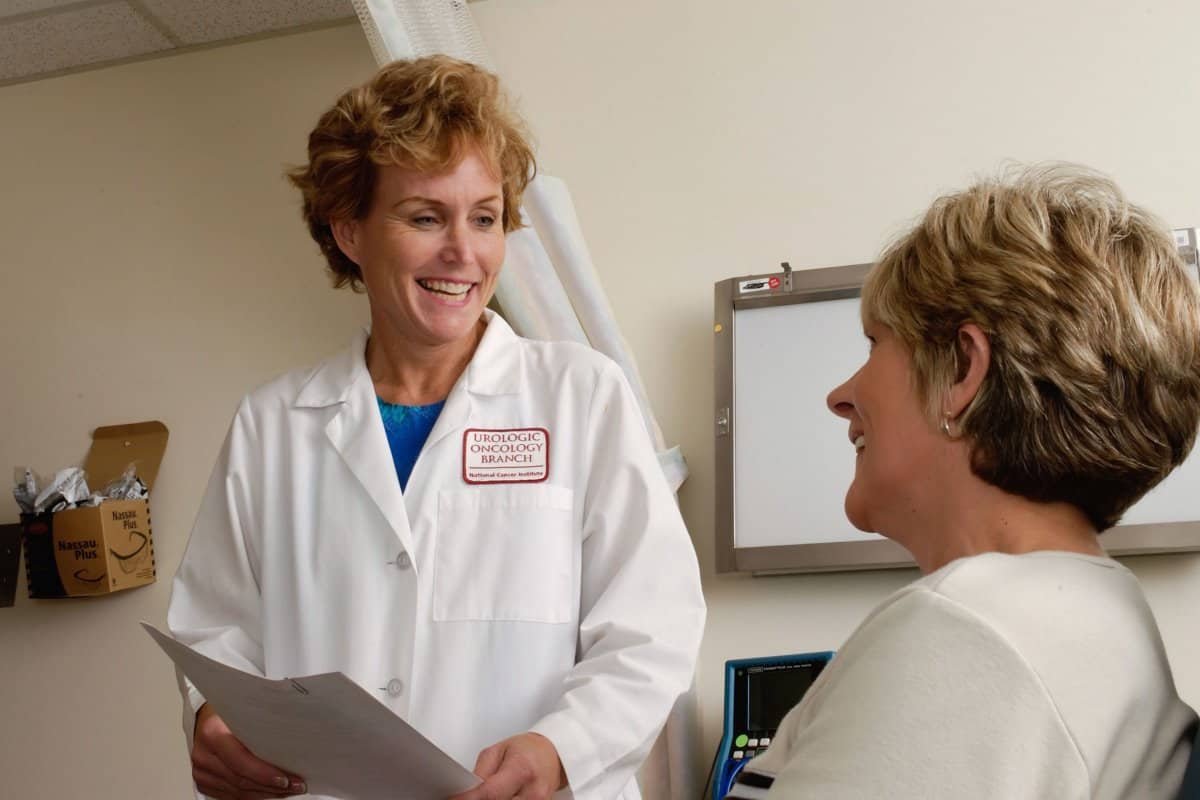How to Improve Communication In a Hospital Setting
How to Improve Communication In a Hospital Setting
One way to improve communication in a hospital setting is to ensure that all staff members are continuously developing and that they are fully trained in effective communication techniques.
This can include things like active listening, providing clear and concise instructions, and being respectful of others’ time and space.
It is important to create an environment where open communication is encouraged and fostered. This means creating an open door policy, being approachable and available to staff, and being willing to have difficult conversations when necessary.
Effective communication also requires paying attention to nonverbal cues and body language.
By doing all of these things, hospital staff can create an environment where communication is more effective and efficient.

Here are the 5 exact steps to take to improve communication in a hospital setting:
- Evaluate current communication methods and procedures.
- Identify areas where communication can be improved.
- Draft a plan to improve communication, including new policies or procedures if necessary.
- Implement the plan and monitor its effectiveness.
- Make adjustments to the plan as needed.
Evaluate Current Communication Methods and Procedures
Communication is vital to the operations of any hospital because it allows medical professionals to coordinate their activities and deliver care effectively.
Good communication also helps to ensure that patients receive the best possible care by allowing staff to share information about treatments and procedures. Effective communication can help to reduce errors and improve patient safety.
To ensure that patients receive the best possible care, it is essential that everyone from doctors and nurses to support staff are able to communicate effectively with one another. There are a number of steps that can be taken to improve communication in a hospital setting, including evaluation of current communications.
This is the first step in identifying areas where communication can be improved. To do this, it may be helpful to speak with staff members from different departments to get their perspectives on how communication currently works within the hospital.
It is evident that current communication methods and procedures in hospital setting are not effective. This can be seen through the high rate of medical errors, patient dissatisfaction, and poor coordination among different departments.
In order to improve communication in hospital setting, it is important to first identify the root causes of these problems. Once the root causes are identified, appropriate solutions can be implemented to improve communication in hospital setting.
Then, there is a lack of standardization. Different departments within a hospital often have their own way of communicating with each other. This leads to confusion and misunderstanding, which can ultimately result in errors.
In order to improve communication in hospital setting, it is important to establish standardized communication methods and procedures.
Another root cause of ineffective communication in hospital setting is the lack of technology. Most hospitals still rely on outdated methods of communication, such as pagers and fax machines.
These methods are often unreliable and can lead to delays in communication. In order to improve communication in hospital setting, it is important to invest in modern communication technologies, such as electronic medical records and secure messaging systems.
Another root cause of ineffective communication in hospital setting is the lack of training. Most hospital staff are not properly trained in how to use the available communication methods and procedures.
This leads to even more confusion and misunderstanding. In order to improve communication in hospital setting, it is important to provide training to all staff members on how to use the available communication methods and procedures.
By identifying the root causes of ineffective communication in hospital setting, appropriate solutions can be implemented to improve communication. Standardization, technology, and training are all key components that should be addressed in order to improve communication.
Identify Areas Where Communication Can Be Improved
Once current communication methods have been evaluated, it should be easier to identify areas where there is room for improvement. These areas could include things like the way information is shared between departments, or the way patient care is coordinated between different team members.
Nurses and Doctors
One area where communication can be improved in hospital settings is between nurses and doctors. There is often a lack of communication between these two groups, which can lead to errors and miscommunication.
Patients and Their Families
Another area where communication can be improved is between patients and their families. Families often feel left out of the decision-making process and they may not understand what is happening with their loved ones. Improving communication in these areas can help to make the hospital experience better for everyone involved.
Draft a Plan to Improve Communication
Once potential improvements have been identified, a plan can be created to implement these changes. This plan should detail what changes need to be made, who will be responsible for making them, and how they will be implemented.
One way to improve communication in a hospital setting is to have clear and concise protocols in place for handling patient information. It should be contained in the draft. All staff members should be trained on these protocols and should follow them consistently.
Effective communication between different departments within the hospital is also essential for providing quality care. Inter-departmental meetings or regular updates can help ensure that everyone is on the same page and aware of any changes that could affect patient care.
Finally, maintaining open lines of communication with patients and their families is essential to providing a high level of care. This can be done through regular updates and check-ins, as well as ensuring that all questions and concerns are addressed in a timely manner.
By taking these steps, hospitals can improve communication and provide better care for their patients.

Implement the Plan and Monitor Its Effectiveness
After the plan has been created, it is important to put it into action and then monitor how well it is working. This can be done by speaking with staff members and observing how communication has changed within the hospital.
This is a major challenge. There are many factors which can help or hinder the success of this type of initiative.
To address these challenges, a pilot study was conducted in two hospitals in Toronto, Canada. The purpose of this study was to explore the acceptability, feasibility and potential effectiveness of an electronic hand hygiene plan (EHHP).
The EHHP is a computerized intervention that was designed to increase health care workers’ compliance with hand hygiene guidelines. The intervention consists of three main components: an educational module, a real-time monitoring system, and feedback reports.
The educational module provides information on the importance of hand hygiene and proper handwashing technique. It also includes video demonstrations of proper handwashing technique.
The real-time monitoring system uses infrared sensors to detect when health care workers enter and leave patient rooms. The system then records the amount of time spent in each room and the number of hand hygiene opportunities that were available.
The feedback reports provide individualized feedback to health care workers on their compliance with hand hygiene guidelines. The reports also include information on the number of hand hygiene opportunities missed and the amount of time spent in each patient room.
The results of the pilot study showed that the EHHP was feasible and acceptable to health care workers. The intervention was also associated with an increase in compliance with hand hygiene guidelines. These results suggest that the EHHP has the potential to improve hand hygiene compliance in hospital settings.
Make Adjustments to the Plan as Needed
If the initial plan does not seem to be working as well as hoped, it may need to be adjusted. This could involve making changes to the way information is shared between departments, or increasing communication between team members.
The hospitals are always keen to make plans that will be efficient and effective in treating patients. They also want to avoid errors that could jeopardize patient safety. To meet these goals, they have established a process for making adjustments to the plan.
First, the hospital’s clinical staff meets to discuss the patient’s case. Then, they develop a preliminary plan of care. This plan is reviewed by the attending physician, who makes any necessary changes. Lastly, the revised plan is implemented.
An example – If the patient’s condition deteriorates, or if there are unexpected complications, the clinical staff will meet again to reassess the situation. They will develop a new plan of care, which will be reviewed and approved by the attending physician.
Once the new plan is in place, the clinical staff will continue to monitor the patient’s progress and make any necessary adjustments.
It is important to note that not all changes to the plan require approval from the attending physician. For example, if a patient’s condition improves, the clinical staff may decide to reduce the frequency of visits or discontinue certain treatments.
However, any changes that could potentially impact the patient’s safety must be approved by the attending physician before they are implemented.
The process for making adjustments to the plan is designed to ensure that patients receive the best possible care. By involving the clinical staff in the decision-making process, the hospital can be confident that the changes made are in the best interests of the patient.
By requiring approval from the attending physician for potentially risky changes, the hospital can avoid making errors that could jeopardize patient safety.
Final Word
By taking these steps, hospitals can improve communication and ensure that everyone is on the same page in terms of patient care. This can lead to better outcomes for patients and a more efficient hospital overall.








